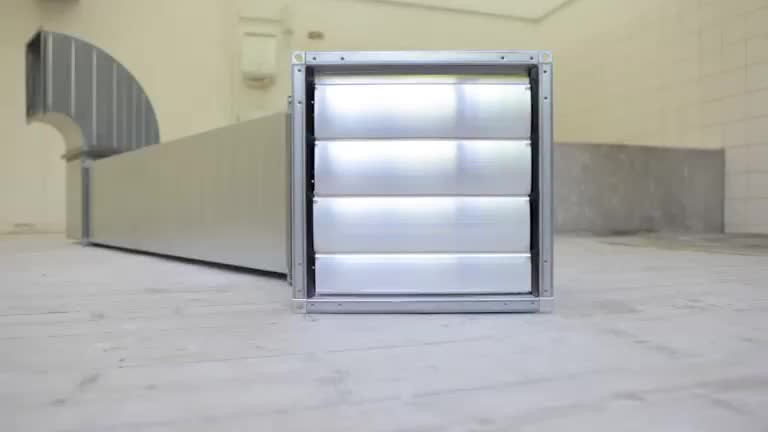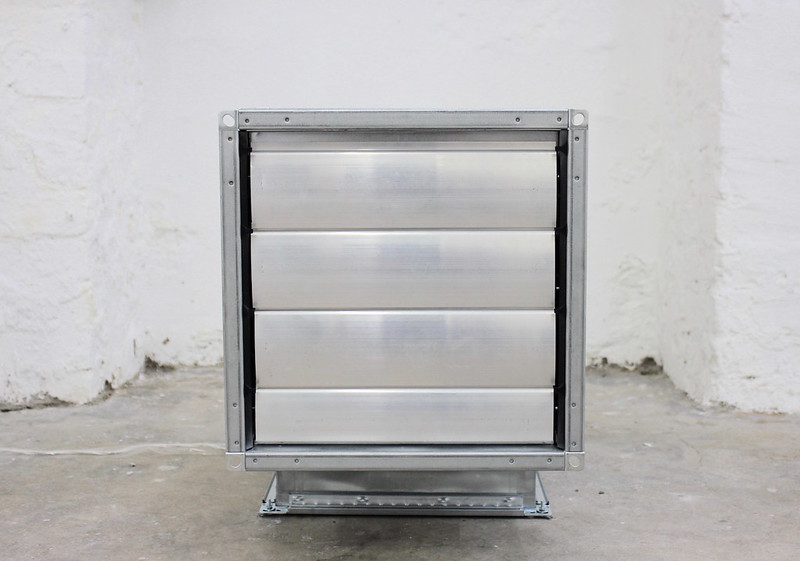
“3’2,2m3” (Sound) by Miriam Hamann at DZIALDOV, Berlin
Having grown up in Austria and studied art in Paris and Vienna, the installation and sound artist Miriam Hamann reacts to her respective, direct urban surroundings and employs the inspiration to form minimalist, re-contextualised works. Air ducts, light bulbs, light switches, steel and concrete are repetitive materials that she frequently relocates. While currently spending time at the TITANIK residency for sound-based art practices in Finland, she recently moved to Berlin and continues capturing forms and sounds found in industrial design and every-day life in her sketchbook. In an interview we spoke about the tradition of minimalism, about the beauty in urban landscapes and her participation in the current group show "New Skin for the Old Ceremony" at the project space DZIALDOV in Berlin.
Anna-Lena Werner: Miriam, many of your works address the beauty or the sculptural quality in everyday-items and objects of functional design. Why did you develop the interest in emphasising what we see every day?
Miriam Hamann: Actually, things and impressions of everyday-life have always caught my interest. I remember that even when I was younger I was curious about how different objects of daily life form certain arrangements. Now, working as an artist, I am very observant and attentive when walking around, especially within urban surroundings. Many of my works deal with sculptural forms, but they also focus on immaterial manifestations. Nowadays we are confronted by so many impressions – visual and audible ones – that most of the time we are not even aware, what is actually shaping the urban landscape. What I do, is decontextualizing what I perceive. In this way it becomes not only something new but also provides the viewer a new way of perception and the possibility to focus on a specific form of appearance he may does not habitually notice.
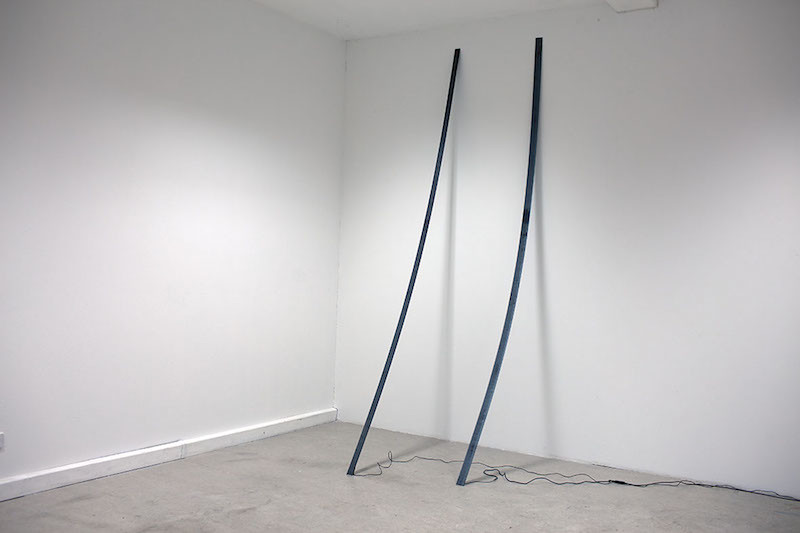

"Steel oscillating" (Sound) © Miriam Hamann
ALW: Your sculptures and installations often have a clinical and minimalist aesthetic. I wonder if you consider your work, or at least its formal appearance, a continuation of this genre?
MH: Yes, it's true that my installations are always very minimalistic. I prefer that way of producing works because I appreciate the beauty of simple forms and pure materials. In terms of its appearance my work may be a kind of continuation of the idea of the simplicity of forms and the qualities of industrial materials and serial repetitions. But I'd say that my installations differ from a certain aspect: the minimalists refused any metaphoric reading of their art pieces. Even though I use materials and forms that refer primarily to themselves, I usually add a second layer. One of my latest installation "40°Nord, 30°Süd" is composed of light bulbs. They are lighting up and dimming in a certain rhythm, reflecting measured satellite values of the global light emission. So even if the material again refers to its own materiality and function, there is also a certain content allowing a reading beyond the material itself.
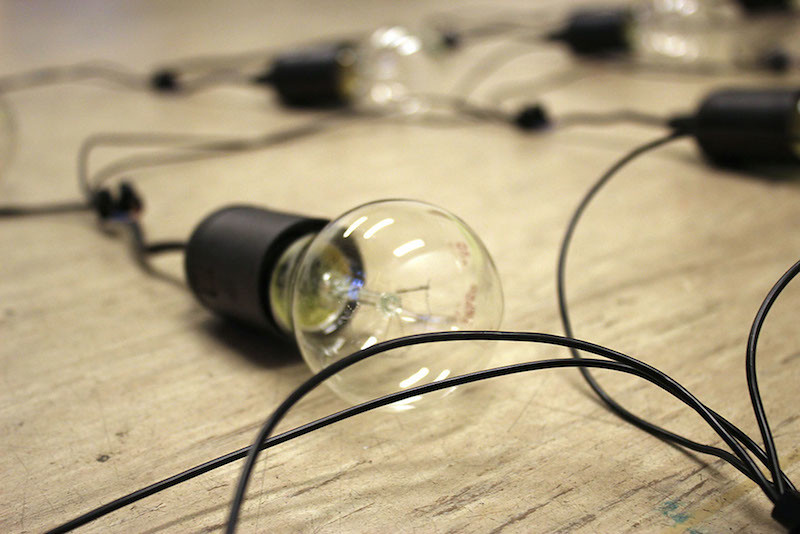
40°Nord 30°Süd © Miriam Hamann
ALW: Steel, concrete or parts of electric devices, such as light switches or light balls, are amongst the material you work with. But contrary to their industrial appearance, aren’t your works actually very poetic and immersive?
MH: I like technical devices and functions, and the idea to build new forms or detach special sounds or light appearances. I especially find them within urban and industrial contexts. What is important to me is not only to take those forms or sounds, putting them into a white cube, but also to add new layers. It's not just about recontexualising everyday-items; I always consider the surrounding the items come from, their purpose, their function, their effect, their sound when they are formed or broken.
ALW: Is there a border between art and design?
MH: The boundaries between these two are very fluid. It also depends on different criteria and connotations if something is considered as design or an art object. The difference may be the question about function and usage. I wouldn't deny that designers create items that can stand for their own, but maybe design is more about the function of an object as well as its interaction with the user, whereas an art piece doesn't have to fulfil an applicable functionality.

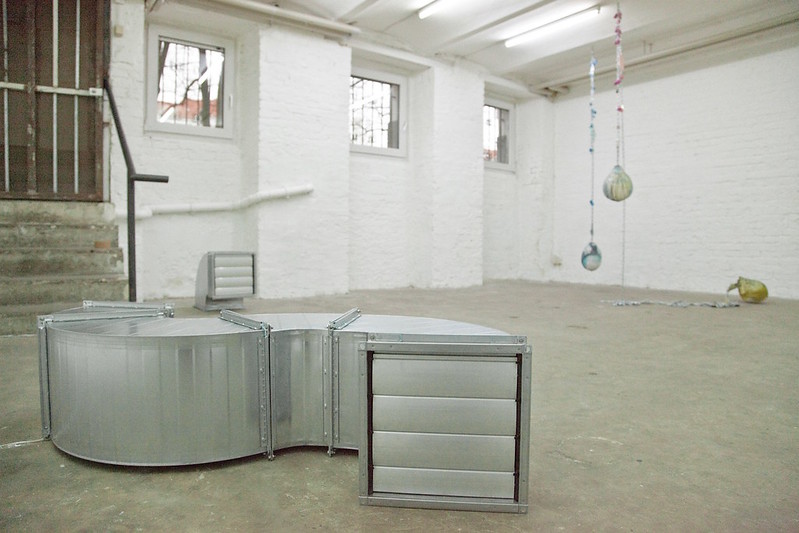
“3’2,2m3” (Sound) by Miriam Hamann at DZIALDOV, Berlin
(work in the background by Vera Kox)
(work in the background by Vera Kox)
ALW: Besides working with objects, you also sculpt moving sound, as for example in the work “Pendulum”. In sound installations, such as “3’2,2m3”, which you currently exhibit at the project space DZIALDOV in Berlin you create acoustic spaces through hidden ventilation flaps and subtle dialogues between air duct objects, adding another layer to their physical presence. How is your work with sound related to your practice with sculptural material – how do they intersect and where do they repel each other?
MH: Working with sound is an extension of my approach to sculpture. I consider it an immaterial material. It all began with a video work I was struggling with for some weeks, until I decided to get rid of the image and just work with the sound. I got quite interested in sound and its power to affect and influence space. But the essential point is not the non-material or the disembodiment, than rather the mediality and the attempt to provide the non-visible with a space, in which it can move. I use the immaterial as a “fabric”, that can become a building block for the creation of new architectures.
ALW: The installation “Visualisation of a clattering sound” turns the sounds of ventilation flaps, presented in “3’2,2m3”, the other way around and instead reformulates the visual presence of their sound into the self-sufficient material of an acoustic wave. Formed out of glowing neon light, its recorded trace is captured. Why does the immaterial ask for a materialisation, or even, a manifestation?
MH: I wouldn't say that it asks for it, hence it should and can stand for its own. My intention was not to materialize the immaterial for a didactic reason. It was about showing a segment of an infinite circuit: What happens if I take a certain sound as the starting point for an installation that is formed out of a solid material, which again produces a new sound and then take this immaterial appearance as a starting point for another work formed out of a solid material and so on...
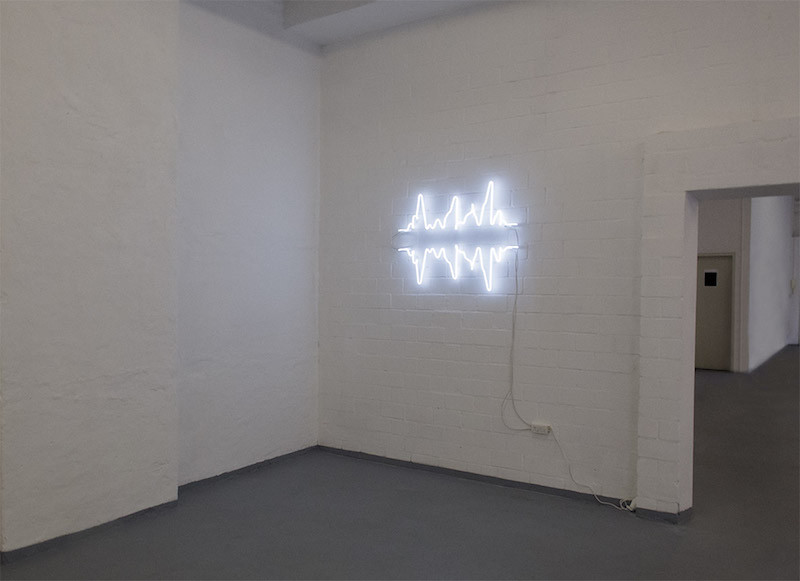
“Visualisation of a clattering sound” © Miriam Hamann
ALW: Hence much of your work picks up on the everyday design around you, how much does the location that you reside in affect the material and concepts of your art?
MH: It strongly affects my work. That's one of the reasons why I have recently moved from Vienna to Berlin. I really like Vienna a lot, but I had the feeling that I should change the place I live in to find new inspirations. My sketchbook is full of new ideas – most of them developed because of the materials and sounds I've perceived lately.
ALW: Now that you mention your sketchbook – in your daily practice, do you experiment with different material or do plan concepts before playing around with textures, surfaces?
MH: I usually work in a conceptual way. It rarely happens that I just take a material and play with it in order to create a new work. So mostly I plan my concepts very precisely with a lot of research and sketches before I start producing a work. But even if I have the concept in mind before realising a new installation, there is still the possibility that the work changes during the process.
miriamhamann.com
Current Shows
NEW SKIN FOR THE OLD CEREMONY
With Miriam Hamann, Vera Kox, Franz Schmidt, Dino Steinhof
Curated by Katja Kottmann & Anna-Lena Werner
18.03 - 01.05.2016
DZIALDOV
Maybachufer 43
12047 Berlin
Opening Hours. Sundays 13—18h
Gallery Weekend Berlin 01.05, 12-18h
Web: dzialdov.de
miriamhamann.com
Current Shows
NEW SKIN FOR THE OLD CEREMONY
With Miriam Hamann, Vera Kox, Franz Schmidt, Dino Steinhof
Curated by Katja Kottmann & Anna-Lena Werner
18.03 - 01.05.2016
DZIALDOV
Maybachufer 43
12047 Berlin
Opening Hours. Sundays 13—18h
Gallery Weekend Berlin 01.05, 12-18h
Web: dzialdov.de
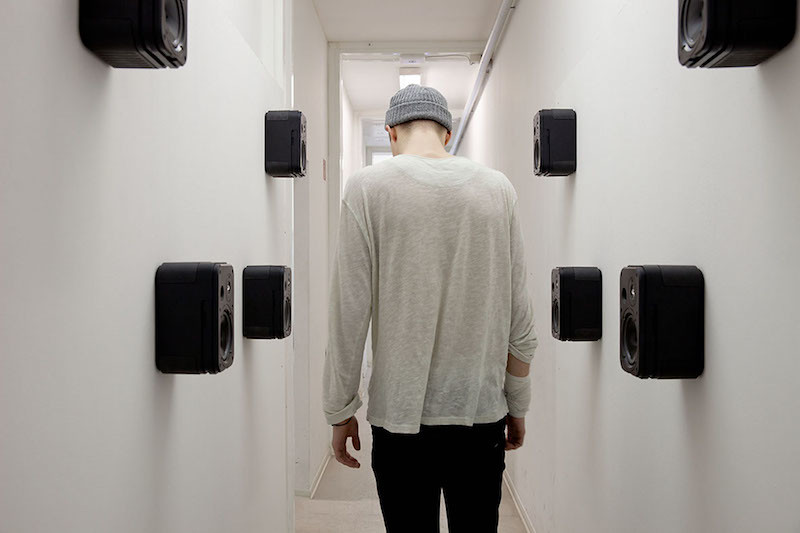
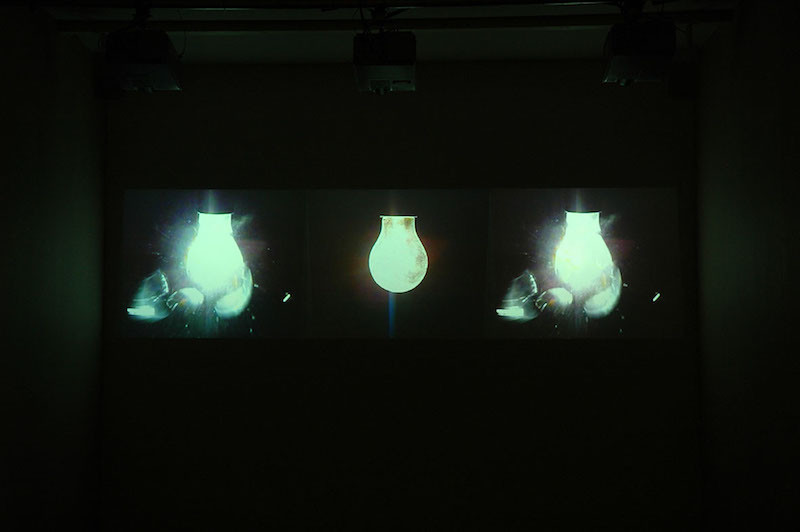
"Pendulum" (Sound) and "Le Coup" © Miriam Hamann

